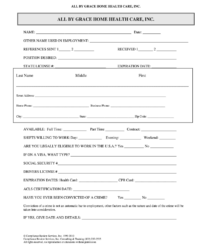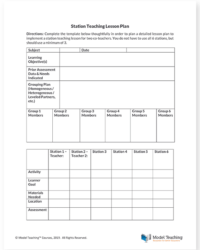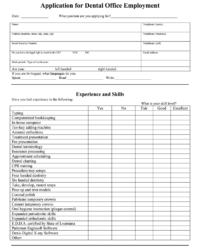Utilizing a pre-defined structure offers several advantages. It reduces the likelihood of errors and omissions, ensuring comprehensive data capture. This systematic approach simplifies data analysis and interpretation, accelerating research efforts and potentially leading to quicker diagnosis and improved patient outcomes. Furthermore, a standardized format can facilitate access to relevant information for patients and their families, empowering them to navigate the complexities of their condition.
This foundational understanding of structured information gathering for uncommon medical conditions sets the stage for a deeper exploration of specific applications, including grant proposals, clinical trial submissions, and patient registry entries. Subsequent sections will delve into these areas in detail, highlighting best practices and offering practical guidance.
Key Components of a Rare Disease Application Framework
Effective frameworks designed for rare disease information management typically encompass several crucial components. These components ensure comprehensive data collection and facilitate efficient communication among stakeholders.
1: Disease Information: This section requires precise details about the specific rare disease, including established diagnostic criteria, known genetic or environmental factors, and prevalent symptoms.
2: Patient Demographics and Medical History: Comprehensive patient information, including age, sex, ethnicity, family history, and relevant medical history, provides context for understanding individual cases and potential disease variability.
3: Treatment History and Current Status: Documenting prior and ongoing treatments, including medications, therapies, and surgical interventions, offers valuable insights into treatment efficacy and potential side effects.
4: Outcome Measures: Clearly defined outcome measures, such as disease progression, quality of life indicators, and functional assessments, enable objective evaluation of treatment effectiveness and patient progress.
5: Supporting Documentation: Inclusion of relevant medical records, laboratory results, imaging studies, and genetic testing reports substantiates the information provided and strengthens the application.
6: Contact Information: Accurate contact information for the patient, healthcare providers, and other relevant individuals facilitates communication and ensures timely follow-up.
A well-structured framework incorporating these elements promotes standardized data collection, enabling researchers and clinicians to effectively analyze trends, identify potential therapeutic targets, and ultimately improve patient care. Consistent data organization also facilitates seamless information sharing and collaboration among stakeholders, accelerating research progress and potentially leading to faster diagnoses and improved outcomes.
How to Create a Rare Disease Application Template
Developing a robust template for rare disease applications requires careful consideration of several key factors. A well-designed template ensures consistent data collection, facilitates efficient communication, and supports informed decision-making.
1: Define the Scope and Purpose: Clearly articulate the specific goals and objectives of the template. Determine the target audience and the types of rare diseases it will encompass.
2: Establish Essential Data Elements: Identify the critical pieces of information required for each application. Consider disease-specific data, patient demographics, medical history, treatment details, outcome measures, and supporting documentation.
3: Design the Template Structure: Organize the data elements into a logical and user-friendly format. Utilize clear headings, concise instructions, and standardized terminology to minimize ambiguity and ensure consistent data entry.
4: Select an Appropriate Format: Choose a suitable format for the template, such as a fillable PDF form, a spreadsheet, or an online database. Consider factors like accessibility, data security, and ease of use.
5: Pilot Test and Refine: Before widespread implementation, pilot test the template with a small group of users. Gather feedback and make necessary revisions to improve functionality and usability.
6: Implement and Maintain: Introduce the template to the intended users and provide appropriate training and support. Regularly review and update the template to ensure it remains relevant and effective.
7: Disseminate and Promote: Make the template readily available to relevant stakeholders, including researchers, clinicians, patients, and advocacy groups. Promote its use through educational materials and outreach efforts.
A comprehensive and well-designed template promotes efficient data management, facilitates collaboration, and ultimately contributes to improved outcomes for individuals affected by rare diseases. Regular evaluation and refinement ensure the template’s continued relevance and effectiveness in supporting research and patient care.
Standardized frameworks for organizing information related to uncommon medical conditions offer a crucial tool for advancing research, improving clinical care, and empowering patients. These structured templates facilitate consistent data collection, streamline communication among stakeholders, and accelerate the development of effective diagnostic and therapeutic strategies. From grant proposals and clinical trial submissions to patient registries and individual case reports, adherence to a standardized format ensures data integrity, simplifies analysis, and promotes collaboration. This, in turn, leads to a deeper understanding of rare diseases, faster diagnoses, and ultimately, improved patient outcomes.
The ongoing development and refinement of these crucial resources represent a significant step toward addressing the unmet needs of individuals affected by rare diseases. Continued investment in these frameworks, coupled with collaborative efforts among researchers, clinicians, patients, and advocacy groups, will pave the way for more effective treatments, improved quality of life, and ultimately, a brighter future for those living with these challenging conditions. Wider adoption of standardized templates holds the potential to transform the landscape of rare disease research and care, offering hope and accelerating progress toward a world where effective treatments are accessible to all.


